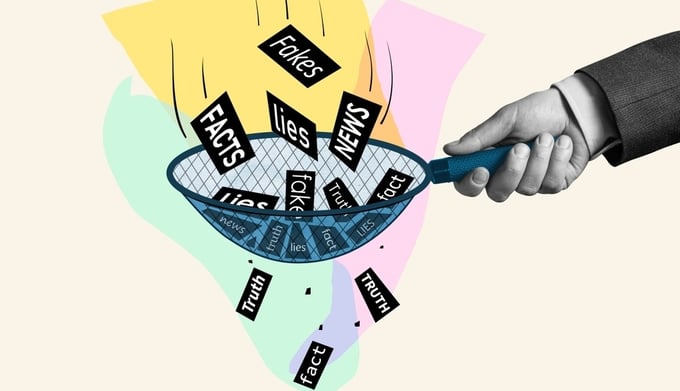In Year 2 of AI-Taking-Over-Our-Lives-and-Headlines, much of the initial shock and awe has dissipated. AI tools have greatly disrupted the human workforce, with some going “all-in” on AI, like the publication, Business Insider, and brands like Duolingo.
Yet a 2025 Epsilon Pulse report found that content teams are seeing AI as their friend — a staggering 94% of marketers say they use AI technologies. More than two in three marketers even go as far as to say that they’re excited about AI and its impact on their jobs, according to a 2025 SurveyMonkey report.
Humans and AI can collaborate efficiently, though humans’ jobs have been reshaped as a result of what the tech can do. As the technology evolves, content teams, including Stacker, continue to develop principles for its use and how to best harness it. There’s no way to know exactly how human jobs will continue to change, but some key skill sets have emerged that content teams can leverage in this new era of content production.
To leverage the strengths of humans and bots, content teams should prioritize five critical abilities to optimize the content they create alongside AI.
#1: Critical Thinking and Editorial Judgment

AI has an incredible ability to extract trends from data, far faster than humans can. It can even generate ideas and drafts based on what it learns through neuro-linguistic processing.
It might feel too good to be true — and it can be — without keeping humans in the loop. AI models can still be highly inaccurate and go awry without human guardrails. Lessons from the recent Chicago Sun-Times summer reading list errors were a necessary reminder that humans still need to intervene throughout the content generation process: human fact-checking should be able to call AI out the next time it tries to convince humans to read a bunch of made-up books and fake experts.
As the volume of content output increases with AI, so too do content professionals need to maintain high accuracy and ethical standards. They must hone in on their abilities to vet and critique AI-generated material, resisting the temptation to blindly rely on the ease it brings. Maintaining quality and credibility means adding layers of enhancement to AI-created drafts for meaning, nuance, and tone — things that AI can’t deliver on its own. And even if they could, consumers don’t respond well when they believe emotional content was created by AI.
#2. Brand Stewardship and Voice Guardianship

AI output is generic by default — what we call “artificial intelligence” is simply mimicking the trove of information it's ingested before.
So, content professionals using AI must have a deep understanding of brand identity to refine AI-generated content by hand or through feedback to boost the AI’s ability to engage and stay on-brand. Humans serve as stewards who ensure that content upholds the unique voice, tone, and messaging framework of their brand, always questioning alignment with their audience.
Without human hand-holding, AI-generated content will strip the sense of authenticity and emotional resonance that brands have built with their audiences over time. “Authenticity is not just a buzzword. It’s literally a brand’s lifeline,” Tonya McKenzie, Communications and Marketing Strategist, From the Lockerroom to the Boardroom, told Stacker.
#3: Prompt Engineering

Humans are also necessary puppeteers to engineer the prompts that guide AI to generate or analyze. Clear, specific prompts enable better first drafts and faster workflows.
Teams who learn to “talk to” AI tools — providing them with well-defined strategies, frameworks, customer personas, tone guidance, and continual tweaking with layers of prompts have better chances of getting AI to work for them, rather than creating more work.
#4: Audience Empathy and Storytelling

Amid a sea of AI-generated noise, it's still human-created stories that resonate and rank.
AI can assemble facts well, but it can't understand the human emotions behind why a story will matter to readers. This means that content professionals must ensure they contextualize and embed emotional intelligence into early AI drafts. Without it, readers will tune out if their pain points, desires, fears, and joys aren’t felt or understood in the content they consume.
#5: Data Interpretation and Content Optimization

Lastly, AI can surface data and trends, but humans must decide what matters and how to act on it.
Skills in analytics will differentiate good teams from great ones, such as identifying content gaps, data quality, understanding user intent, and optimizing content based on performance data. Humans are necessary to surface the right data to feed to AI and must retain our abilities to strategize how data and content can help grow audiences.
🔥 Pro Tip:
The most successful content teams won’t just use AI tools. They’ll train themselves to collaborate with AI — using it to remove friction from workflows, spark creativity, and double down on uniquely human strengths.
Danika Murphy is a seasoned sales and brand strategist with a decade of experience helping companies grow through creative storytelling and data-driven distribution. Currently a Senior Account Executive at Stacker, she’s previously led partnerships at Spotify, Veritonic, and ChowNow. Danika brings a passion for marketing, media, and building trusted relationships that drive measurable business outcomes.
Photo Illustration by Stacker // Canva